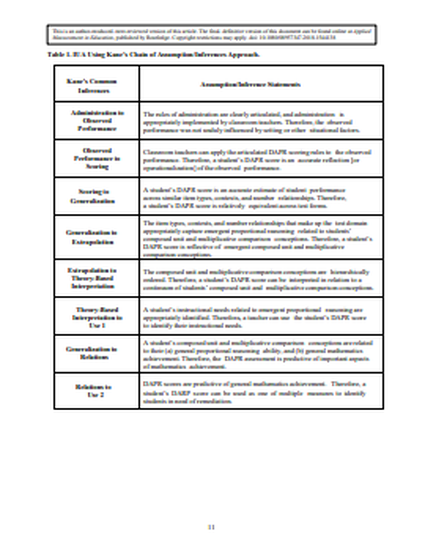
The Standards for Educational and Psychological Testing (AERA, APA, & NCME, 2014) recommend an argument-based approach to validation that involves a clear statement of the intended interpretation and use of test scores, the identification of the underlying assumptions and inferences in that statement—termed the interpretation/use argument, and gathering of evidence to support or refute the assumptions and inferences. We present two approaches to articulating the assumptions and inferences that underlie a score interpretation and use statement, also termed the interpretation/use argument (Kane, 2016). One approach uses the five sources of validity evidence in the Standards for Educational and Psychological Testing (AERA, APA, & NCME, 2014) as a framework and the other approach uses Kane’s chain of assumptions/inferences approach (Kane, 2006, 2013a, 2016) as a framework. Through this process we identified aspects of these approaches that need to be further clarified for instrument developers to consistently implement either approach, identified important differences in the perspective each approach takes on validation, and highlight important questions for the measurement and mathematics education research fields to consider.
This is an Accepted Manuscript of an article published by Routledge an imprint of Taylor & Francis Group in Applied Measurement in Education on 2019, available online at doi: 10.1080/08957347.2018.1544138
Available at: http://works.bepress.com/carl_siebert/50/
